Hierapolis (; Ancient Greek: Ἱεράπολις, lit. "Holy City") was originally a Phrygian cult centre of the Anatolian mother goddess of Cybele and later a Greek city. Its location was centred upon the remarkable and copious hot springs in classical Phrygia in southwestern Anatolia. Its extensive remains are adjacent to modern Pamukkale in Turkey.
The hot springs have been used as a spa since at least the 2nd century BCE, with many patrons retiring or dying there as evidenced by the large necropolis filled with tombs, most famously that of Marcus Aurelius Ammianos, which bears a relief depicting the earliest known example of a crank and rod mechanism, and the Tomb of Philip the Apostle.
It was added as a UNESCO World Heritage Site in 1988. The Italian Archaeological Mission of Hierapolis of Frigia (MAIER) has operated at the site since 1957 and is currently directed by Grazia Semeraro, Professor of Classical Archaeo...Read more
Hierapolis (; Ancient Greek: Ἱεράπολις, lit. "Holy City") was originally a Phrygian cult centre of the Anatolian mother goddess of Cybele and later a Greek city. Its location was centred upon the remarkable and copious hot springs in classical Phrygia in southwestern Anatolia. Its extensive remains are adjacent to modern Pamukkale in Turkey.
The hot springs have been used as a spa since at least the 2nd century BCE, with many patrons retiring or dying there as evidenced by the large necropolis filled with tombs, most famously that of Marcus Aurelius Ammianos, which bears a relief depicting the earliest known example of a crank and rod mechanism, and the Tomb of Philip the Apostle.
It was added as a UNESCO World Heritage Site in 1988. The Italian Archaeological Mission of Hierapolis of Frigia (MAIER) has operated at the site since 1957 and is currently directed by Grazia Semeraro, Professor of Classical Archaeology at the University of Salento.
 The main street of Hierapolis
The main street of Hierapolis Part of the archeological site of HierapolisIron Age
Part of the archeological site of HierapolisIron Age
In 2016, excavations were carried out in the Northern Necropolis area of Hierapolis at the entrance of the Archaeological Park by the archaeologists from Denizli Hierapolis Archeology Museum. During these excavations, Iron Age settlement structures were unearthed for the first time in Hierapolis. There are round huts belonging to a large settlement believed to cover the side of the Çökelez Mountain overlooking the wide plain of the Lykos River.[1] Before the Greek colony was established the cult area dedicated to Cybele around a cave and the surrounding rocks was the center of the archaic settlement.[1]
Ancient HieropolisThe Phrygians built a temple dedicated to the mother goddess Cybele on the site[2] probably in the first half of the 7th century BC. This temple, originally used by the indigenous communities living in the Lykos valley would later form the center of Hierapolis. When the Greek colonists arrived and built the city on the pre-existing pattern of settlement, the ancient cult of Cybele was gradually assimilated into the Greek religion.[3]
From well before the time of the Greek colonization, the area was seen as a gateway to the underworld and a place of communication with the underworld deities because of the toxic gasses that emerge from a hot spring inside the cave.[4] According to Strabon and Damascius the temple built on top of the cave was linked to the mother goddess Cybele.[5] After the process of assimilation into Greek culture, it was associated with Hades (Pluton) and Persephone instead of Cybele and the temple was named Plutonium.[4]
Hierapolis was founded as a thermal spa early in the 2nd century BC within the sphere of the Seleucid Empire. Antiochus the Great sent 2,000 Jewish families to Lydia and Phrygia from Babylon and Mesopotamia, later joined by more from Judea. The Jewish congregation grew in Hierapolis and has been estimated as high as 50,000 in 62 BC.[6]
The city was expanded with the booty from the 190 BC Battle of Magnesia[citation needed] where Antiochus the Great was defeated by the Roman ally Eumenes II. Following the Treaty of Apamea ending the Syrian War, Eumenes annexed much of Asia Minor, including Hierapolis.
Hierapolis became a healing centre where doctors used the thermal springs as a treatment for their patients.[citation needed] The city began minting bronze coins in the 2nd century BC. These coins give the name Hieropolis. It remains unclear whether this name referred to the original temple (ἱερόν, hieron) or honoured Hiera, the wife of Telephus, son of Heracles and the Mysian princess Auge, the supposed founder of Pergamon's Attalid dynasty.[citation needed] This name eventually changed into Hierapolis ("holy city"),[7] according to the Byzantine geographer Stephanus on account of its large number of temples.[citation needed]
Roman HierapolisIn 133 BC, when Attalus III died, he bequeathed his kingdom to Rome. Hierapolis thus became part of the Roman province of Asia. In AD 17, during the rule of the emperor Tiberius, a major earthquake destroyed the city.
Through the influence of the Christian apostle Paul, a church was founded here while he was at Ephesus.[8] The Christian apostle Philip spent the last years of his life here.[9] The town's Martyrium was alleged to have been built upon the spot where Philip was crucified in AD 80. His daughters were also said to have acted as prophetesses in the region.[10][11]
 The Agora
The AgoraIn the year 60, during the rule of Nero, an even more severe earthquake left the city completely in ruins. Afterwards, the city was rebuilt in the Roman style with imperial financial support. It was during this period that the city attained its present form. The theatre was built in 129 for a visit by the emperor Hadrian. It was renovated under Septimius Severus (193–211). When Caracalla visited the town in 215, he bestowed the much-coveted title of neocoros upon it, according the city certain privileges and the right of sanctuary. This was the golden age of Hierapolis. Thousands of people came to benefit from the medicinal properties of the hot springs.[citation needed] New building projects were started: two Roman baths, a gymnasium, several temples, a main street with a colonnade, and a fountain at the hot spring. Hierapolis became one of the most prominent cities in the Roman Empire in the fields of the arts, philosophy, and trade.[citation needed] The town grew to 100,000 inhabitants and became wealthy. During his campaign against the Sassanid Shapur II in 370, the emperor Valens made the last-ever imperial visit to the city.
During the 4th century, the Christians filled Pluto's Gate (a ploutonion) with stones, suggesting that Christianity had become the dominant religion and begun displacing other faiths in the area. Originally a see of Phrygia Pacatiana,[12] the Byzantine emperor Justinian raised the bishop of Hierapolis to the rank of metropolitan in 531. The Roman baths were transformed to a Christian basilica. During the Byzantine period, the city continued to flourish and also remained an important centre for Christianity.
Medieval Hierapolis Pools in Hierapolis
Pools in HierapolisIn the early 7th century, the town was devastated first by Persian armies and then by another destructive earthquake, from which it took a long time to recover.
In the 12th century, the area came under the control of the Seljuk sultanate of Konya before falling to crusaders under Frederick Barbarossa and their Byzantine allies in 1190. About thirty years later, the town was abandoned before the Seljuks built a castle in the 13th century. The new settlement was abandoned in the late 14th century. In 1354, the great Thracian earthquake toppled the remains of the ancient city. The ruins were slowly covered with a thick layer of limestone.
Modern excavations Tomb of Philip the Apostle, Hierapolis
Tomb of Philip the Apostle, HierapolisHierapolis was first excavated by the German archaeologist Carl Humann during June and July 1887. His excavation notes were published in his 1889 book Altertümer von Hierapolis.[13] His excavations were rather general and included a number of drilling holes. He would gain fame for his later discovery of the Pergamon Altar, which was stolen and reconstructed in the Pergamon Museum in Berlin.
After the large white limestone formations of the hot springs became famous again in the 20th century, it was turned into a tourist attraction named "Cotton Castle" (Pamukkale). The ancient city was rediscovered by travellers, but also partially destroyed by new hotels that were built there. These buildings have been removed in recent years; however, the hot water pool of one hotel was retained, and (for a fee) it is possible to swim amongst ancient stone remains.
Excavations began in earnest in 1957 when Italian scientists, led by Paolo Verzone, began working on the site. These studies continued into 2008 when a restoration of the site began.[citation needed] Large columns along the main street near the gate named for Domitian were erected again. A number of houses from the Byzantine period were also unearthed, including an 11th-century courtyard house. Many statues and friezes were transported to museums in London, Berlin, and Rome.[when?]


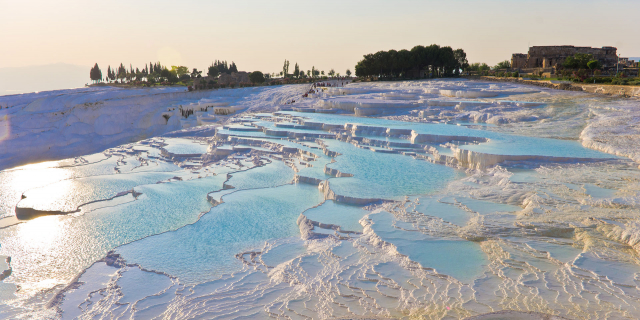

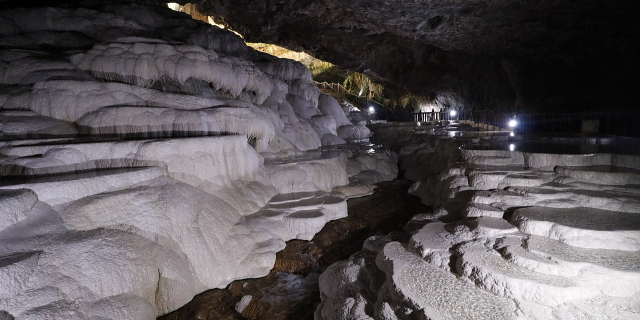
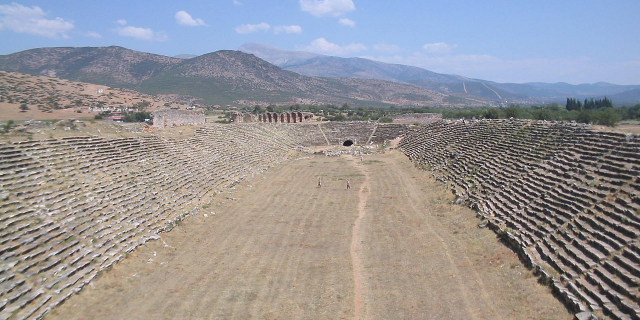

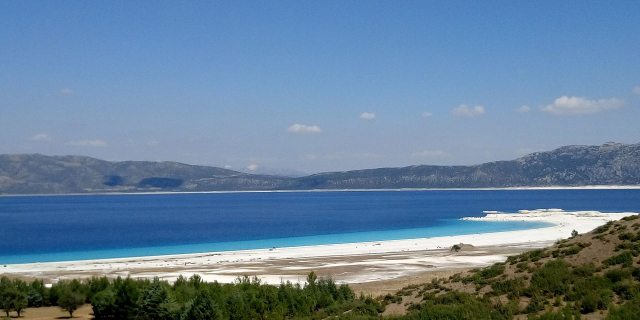

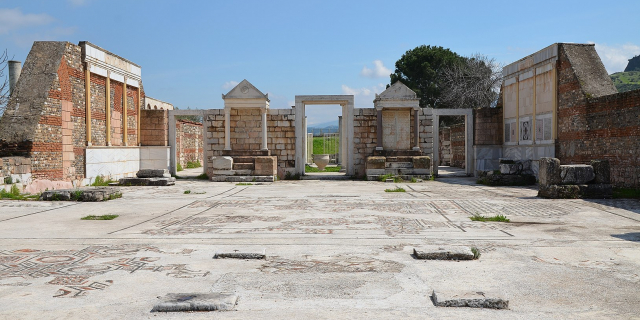





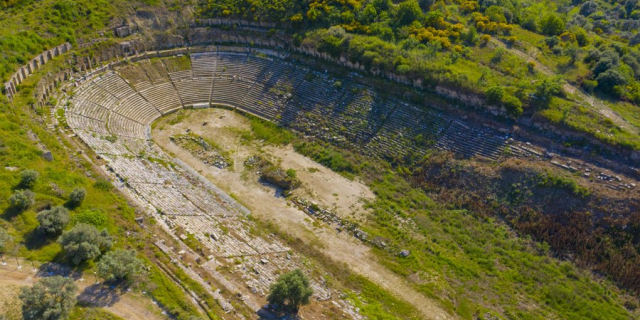
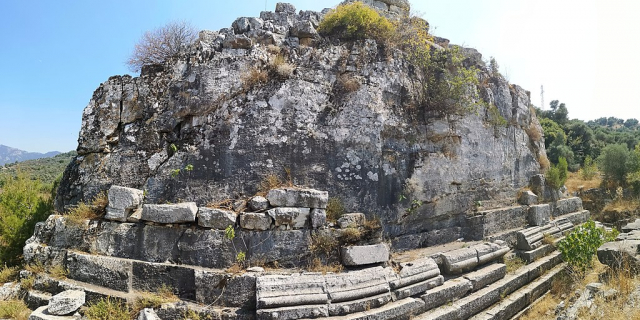

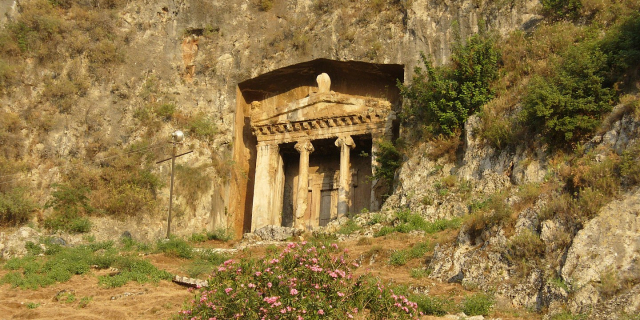
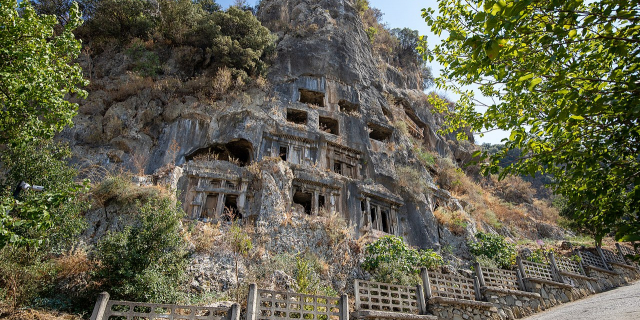

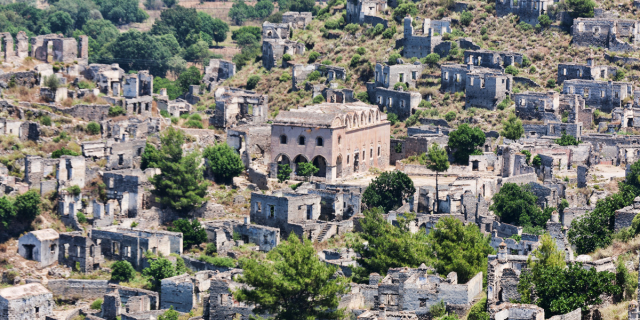

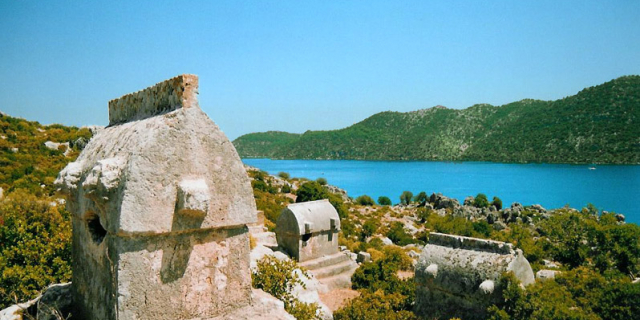


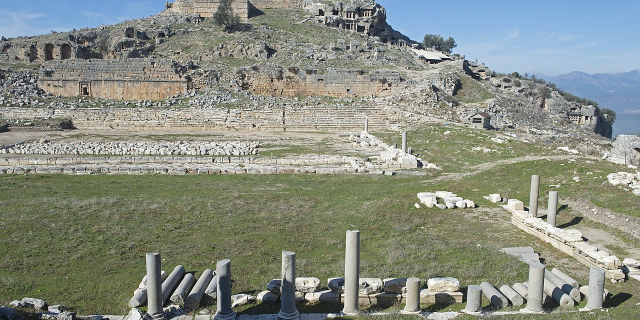
Add new comment